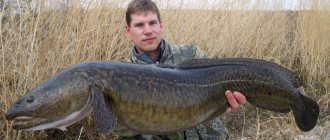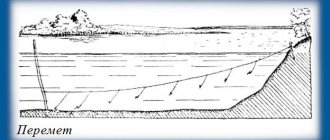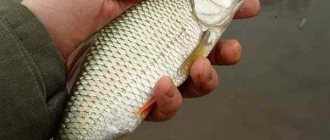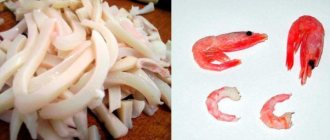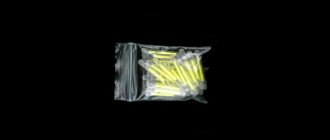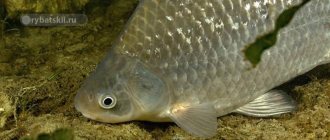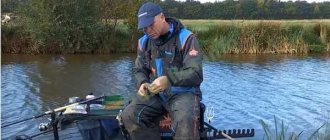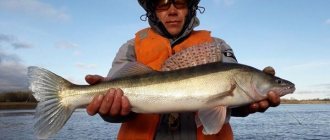Important nuances of burbot autumn fishing
Burbot is a special fish, no matter how you catch it, you won’t be able to catch it because of its very unique way of life. Adapted to existing at the bottom, it does not rise above it more than a quarter of a meter, unless some anthropogenic factor - be it water pollution or other misfortune - can force it to do this. Therefore, gear for autumn burbot fishing in most cases is used on the bottom. They will be discussed in this article.
I dare say that this is not the only way to catch burbot in the fall. The fishing community knows experts who catch this fish exclusively using spinning rods, and in other villages they “fish” for it using the so-called. “radiation,” that is, with the help of a banal prison. But the first method is not possible to implement everywhere, but only where conditions allow you to actively “tap” the bottom and drag the bait along it. The second one, in most regions, is a poaching fish, although in terms of its catchability it is noticeably inferior to nets, and in fact is a “surface version” of completely legal underwater hunting. But consideration of both methods is beyond the scope of this narrative; it is better to devote separate essays to them (which will be done in the near future).
Burbot is active in the dark, therefore, you should immediately mentally prepare for night fishing. Moreover, you can count on a good bite only on moonless nights, at other times - even with a short month, the burbot will be picky, or even refuse to bite at all. On top of everything else, this fish clearly has perverted weather preferences: it loves bad weather with a cold north wind, rain or even the first snow.
But it is in the very darkness, in the very cold, that burbot catches are the most impressive. And the closer the freeze-up, the more vigorously this fish bites.
Methods for bottom fishing for burbot in autumn
In total, there are two ways to catch burbot from the bottom in the fall:
- Active or sporty . This is when a fisherman uses a small (1-3) amount of gear, and sometimes does not even sit at one point, but moves around, alternately fishing in different places. The main gear is a standard bottom fishing rod, or a feeder slightly converted for burbot. Here the fisherman clearly sees the bite and hooks himself, but sometimes he has to freeze.
- Passive . He is a supplier . This method involves installing a fair amount of gear along the shore (up to several dozen), which are then periodically checked. For this, the easiest and most simplified version of the donkey is used - a zakidushka (including without a bell); less often, zherlitsy are used for this purpose. This method is good because while fishing, fishermen sit comfortably in the warmth of a fire and have conversations over tea (or something stronger). This kind of fishing is somewhat more productive than the first option, but here, again, it all depends on the number of baits. Well, and the greed of the fisherman, of course.
Which method to choose from the two is a personal matter for everyone. You can also combine them - fish with an active bottom, and place a few hooks at a distance.
How to catch
Fishing tactics in winter are carried out according to the following scheme:
- drill about 10 holes;
- fish the holes, lowering the bait 25-50 cm from the bottom (depending on the current);
- use a retractable leash to attract the attention of fish.
But the technique of fishing with a fishing rod, jig, girders and hookers will be somewhat different.
How to fish with baits and girders
It is necessary to install the tackle correctly:
- place the sprat on the hook;
- lower the reel until the load touches the bottom;
- pull the line, raising the bait by 20-30 cm;
- fix the reel with a flag at the vent or tie the spacer to the coastal vegetation.
When a bite occurs, you need to wait about 30 seconds for the pike perch to swallow the bait, then hook. Quickly pull out the tackle, reload and lower it into the water. As long as a school of predators stays nearby, you can catch several fish in a row.
Video: how to make supplies for catching pike perch
How to fish with a rod and jig
Catching tactics for fishing rod and jig are as follows:
- the bait is lowered to the bottom;
- make a sharp jerk, lifting the bait;
- alternate jerks with pauses of up to 15-20 seconds.
If you are fishing in a body of water with standing water, then you should fish different horizons.
Used gear and equipment
Regardless of the gear used, to catch burbot, you should use special equipment that has the following characteristics:
- Possibility of quick leash change . This is often observed: a novice fisherman, who has tied the equipment with ordinary knots, drags the trophy to the shore and is perplexed - what to do with it now? Burbot swallows the bait deeply. To pull out the hook, you will have to tinker thoroughly and for a long time, therefore smart fishermen always mount the equipment on a clasp, and prepare several dozen spare leashes.
- The presence of a tungsten leash . I am sure that there will be fishermen who will object to this. And indeed, the teeth of burbot are not as sharp as those of pike. To thoroughly damage the fishing line, it will take a fair amount of time, much longer than what is required by its food competitor. If a fisherman constantly checks his fishing rods, then it is not necessary to install tungsten (but you should check the leads between fishing trips and replace those that seem unusable). However, if the tackle is left for a long time, the burbot may well grind it, and this has happened from time to time, including with fishermen I know. Including on gear where there was a very thick fishing line! On top of everything else - if the fishing is carried out with live bait, then there is a small, but still chance that the pike will covet it, and for it a strong leash is mandatory.
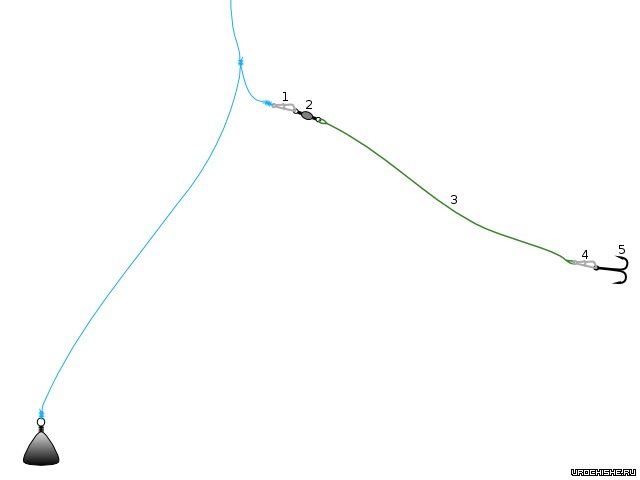
Rice. 1. Equipment of a donkey for catching burbot in the fall: 1, 4 - fasteners (the one at the end of the leash is needed to change the hook, in principle it is optional); 2 — swivel; 3 — tungsten leash; 5 - hook (in this example, a double is used, threaded under the gill cover of the live bait).
One day, on one of our reservoirs, a fisherman I knew put a hook on a burbot and left, intending to check it the next day. Imagine his surprise when, having returned a day later, he took out of the water not a fish, but a sinker with a piece of fishing line, which had clearly been “gnawed through.” By the way, the rig was tied without a leash, on a fishing line 0.4 mm thick.
Yes, regarding the thickness. In our area, the following parameters are in use:
- Main: 0.4 - 0.5 mm;
- Sinker lead: 0.3 mm;
- Lure leash: 0.3 mm (the part between the main line and the clasp).
Why is the line so thick? The thing is that on Ural rivers the bottom is usually rocky and the sinker can easily get stuck between boulders. The stronger the line, the better. By pulling well, you can move the stones and release the sinker. If this doesn’t work, you can pull even harder and “shoot” it off. In any scenario, the main part of the equipment - with the hook and leash - will be preserved.
Classic bottom fishing rod
Typically, such tackle is a converted spinning rod with a test corresponding to the weight of the sinker. A bell on a leash is used as a bite alarm, tied to a stand under the rod and attached to the main line in some soft way, for example, in the slot of a piece of “foam”, or using a weak clothespin.
Some fishermen don’t bother here and hook the bell directly to the tip of the rod. True, then they “shoot” from the unabated ringing.
Feeder
It should be used if you plan to fish with bait (which will be discussed in the chapter on baits). You can also abandon the feeder, replacing it with a sinker, and fish with a feeder - as with regular bottom tackle. The English donka is good for its information content - its flexible tip perfectly shows the bite of burbot, which is sometimes very careful.
If you plan to actively fish for burbot all night long, a feeder is best suited.
Zakidushka
The hook is the most simplified donkey - right down to the fishing line and leash with a hook (in this version, the sinker is a more or less angular stone, picked up right there - at the fishing site and tied with hemp twine). The zakidushka clings to a stake driven into the shore, or to natural objects such as heavy “land” snags or bushes.
The advantage of this gear is the extremely small space it takes up and its negligible weight, which allows some particularly enterprising fishermen to carry almost a hundred pieces of fishing tackle, installing them along the shore for a kilometer every 10-15 meters (of course, if space allows) . The truth is that this is the most real poaching, because the Fishing Rules in most regions limit the number of hooks on gear to ten .
Some fishermen, who are keen on dragging burbot to hooks, do not set bells, because they do not see any point in bite alarms. Gear is checked in the morning and evening. Even if the burbot has been sitting on the hook for a long time, it will not go anywhere. However, if there are underwater snags in the fishing area, it is better not to relax, because no matter the hour, the hooked fish may get entangled in them. Therefore, in snaggy places you should not leave gear unattended for a long time.
Fishing Features
When hunting for pike perch using sprat, an angler gets the benefits of both artificial bait and natural bait. He does not need to select the color, size, brand of “rubber” or balancer, since the bait has the necessary aroma and looks natural.
You can fish this way with both fresh sprat and frozen sprat. In principle, there is not much difference. Many zander fishermen prepare bait in advance so that later they do not have to run around the shops looking for this fish. It is put into bags and stored in the freezer until fishing.
Instead of sprat, you can use other small fish. In particular, fishermen buy sprat or anchovy. You can prepare bait in open water by catching it in advance using a small bait. In this case, the fisherman will be able to attach roach, bleak or perch to the hook.
If the fry is very tight and you couldn’t get it out, then you can quite effectively put a piece of fish on the hook. This is no worse, but it is advisable to prepare fillet strips at home in advance so as not to waste time on the pond.
The principle of catching a fanged one with a sprat differs little from the classic vertical trolling:
- A sprat or other small fish is put on the hook of a jig head, heavy jig or helicopter.
- The weight of the load is selected based on the depth in the fishing zone and the strength of the current.
- The bait is lowered into the hole towards the bottom.
- Then the angler begins to make a retrieve, consisting of twitches and pauses, the duration of which is adjusted to the mood of the pike perch.
In fact, this is how they catch it with a vertical spoon, a balance beam, and other winter pike-perch lures. The difference, perhaps, is that the pause may be longer due to the edibility of the bait.
Photo 1. Tulka is a small fish of the herring family.
The advantages of fishing with sprat
This method, despite the fact that it is quite ancient, is rarely used by young fishermen. Today, newfangled balancers, Finnish vertical spinners and silicone baits are more in use. But fishing with sprat also has its advantages:
- simplicity of the method;
- cheap bait, no need to purchase expensive baits for vertical fishing;
- versatility;
- catchability.
Fishing this way allows you to catch pike perch at any time of winter. In the dead of winter, many baits do not show the expected results, but not sprat. The passive fanged fish responds superbly to the offered bait. Moreover, he takes it confidently, which is not typical of this time.
Nozzles, lures and... groundbait
There are several options for baits for catching burbot in the fall, but in different places one is usually used - the one that has proven itself to be the most effective.
Zywiec
Any small fish or juvenile fish can act as live bait - from gudgeon to roach. Typically, live bait is attached to the upper lip or the back under the fin - if a single-hook version of the equipment is used.
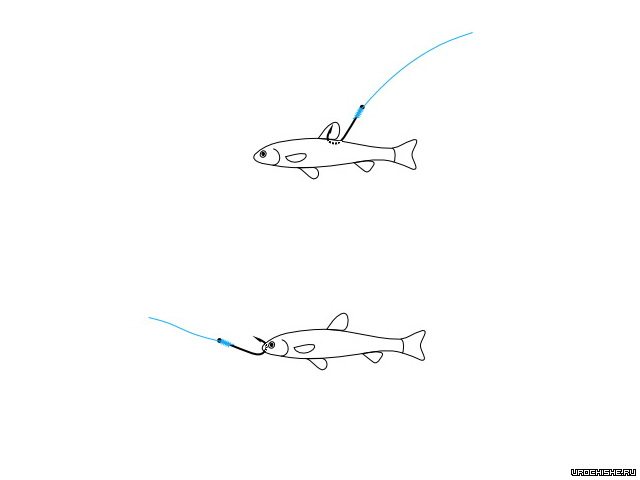
Rice. 2. Methods for attaching live bait to a single hook.
There is another way of attaching live bait, in which it does not need to be pierced; accordingly, the fish will be active on the hook much longer, but here a double hook is used, the leash and shank of which are carefully inserted into the bait fish’s mouth and removed from under the gill cover.
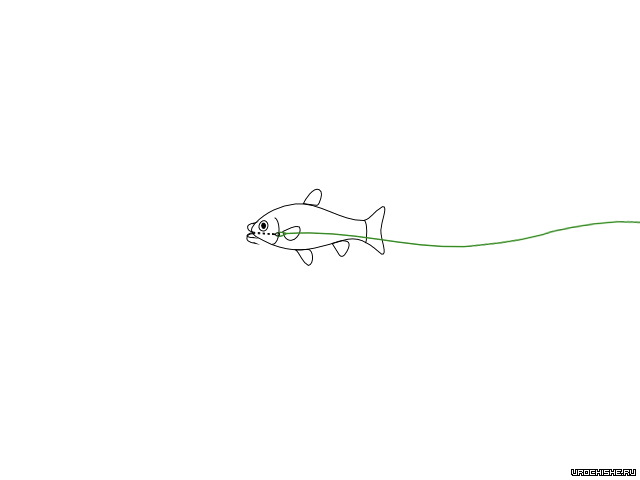
Rice. 3. With this method, the live bait will be active longer than if it were simply pinned on a hook.
Some fishermen advise crushing the bait with a boot before baiting. They say this improves the attractiveness of the bait. I’ll say this: I’ve never tried it and I don’t see much point in it. In my opinion, a whole live bait is still better than a wounded one, since it remains active longer and attracts burbot not only with its smell, but also with its vibrations.
Gudgeon
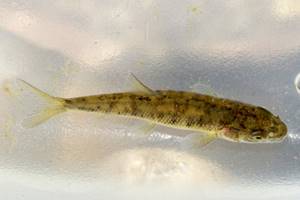
The most popular live bait option when catching “freshwater cod” is the ubiquitous minnow. This small fish is found in many rivers in decent quantities, and catching it will not be difficult. It is also a natural food for burbot. He very willingly takes the minnow.
Char (the one with a mustache)
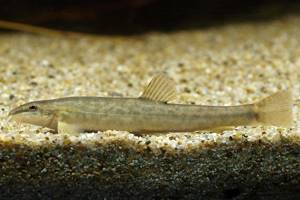
A small fish that usually lives in small rivers. Char - just like gudgeon - is quite easy to catch.
Ruff
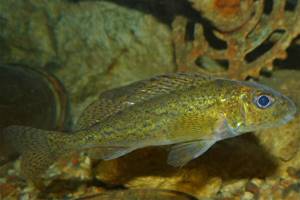
Photo 5. Ruff is one of the best baits for catching burbot in the fall.
The third most popular live bait when catching burbot in the fall. According to knowledgeable fishermen, burbot takes the ruff noticeably more readily than other baits, because it has a strong smell.
Some literature mentions that the ruff can be used for hookless fishing for burbot. To do this, the fish is tied by the tail. The burbot, having taken the bait, swallows the ruffe head first. If you pull the line at this moment, the ruff will spread out its spines and sit firmly in the burbot’s throat.
Other types of live bait
In the absence of the first two, burbot can be caught with: roach, crucian carp, as well as juveniles of large fish like pike, ide, etc. However, you should definitely take into account the following important nuance:
Practice shows that those species of fish that lead a pelagic or surface lifestyle (that is, they do not roam along the bottom and are generally able to quickly escape) can be taken by burbot reluctantly, or even completely ignored.
Pieces of fish meat
Dead live bait should not be thrown away - they can also be used, but there is no particular point in planting them whole, because in this form they are the least attractive to burbot. It's better to cut them into pieces first. This bait is more fragrant than a whole fish; burbot smells it from afar and goes for it noticeably more willingly.
However, it should be borne in mind that pieces of fish in their action time are noticeably inferior to normal live bait - which, if properly mounted, can remain active for a day or more. Fish meat, as a rule, is only good for one night. Then it will either “dissipate” or be plucked by other underwater inhabitants.
You can also catch burbot using pieces of crucian carp, carp bought in a store, or other freshwater fish, and if you don’t have it, you can also use sea fish.
Frog

Fishermen's opinions were divided regarding this bait. Some argue that it is completely useless for catching burbot, others believe that you cannot find a better one. I guess it all depends on the specific places. In some places the burbot knows the frog and willingly feeds on it, but in others it does not.
This bait is attached in two ways: by both lips, or by the back (under the ridge).
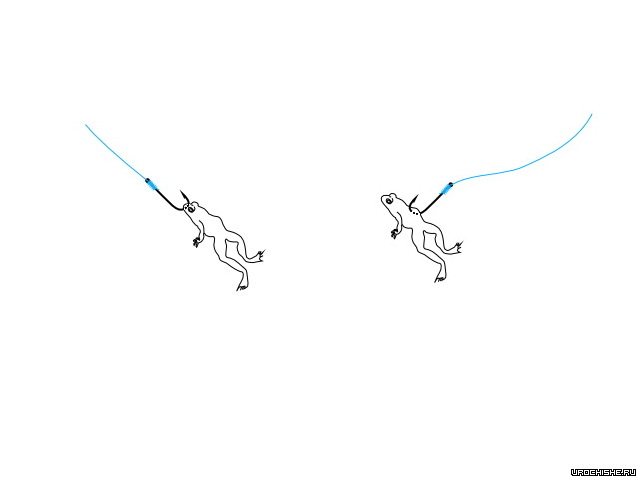
Rice. 4. Methods of attaching a frog: on the left - by the lips, on the right - by the back.
Usually small two-year-old frogs or more or less grown-up yearlings are used. They are caught in the dew back in August, then kept until autumn in a cold, dark place like a cellar - usually in some container with wet grass, closed with a lid with holes for ventilation. Some fishermen equip frogs with a small terrarium with a reservoir - like for amphibious turtles. The container is periodically inspected and cleaned, and the grass or water should be changed.
Dung or earthworms
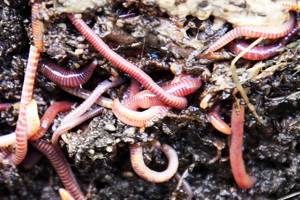
Photo 7. Dung worms in some regions are considered the best bait for catching burbot in the fall. Ordinary crawling earthworms are no worse than them.
It takes burbot on a worm, and quite willingly. The bait is prepared at a time when it is still more or less warm and the worms are digging their tunnels in the surface layers of the earth. With cold weather they go to some depth.
Store worms in a container with soil - in the refrigerator or cellar.
The burbot has a rather large mouth, so it is better to plant the largest worms, or in a bunch. This will also prevent the bait from being quickly damaged by small items.
Other attachments
This can be crayfish meat, leech, or pieces of fresh chicken, beef, pork or liver, as well as other offal or offal. There is information that meat and offal can work for burbot even better than pieces of fish.
Some fishermen soak cotton wool with ghee and fish with it. According to them, this bait imitates crayfish meat and also attracts burbot quite well.
Nothing prevents you from using a “sandwich” of two instead of one specific attachment. But some fishermen didn’t stop there and tied two hooks onto a leash—the first hooks bait, and the second hooks worms. It is argued that this technique increases the catchability of the gear.
Bait for autumn burbot
Classic burbot fishing in the fall does not involve the use of any bait, because the bait is usually quite large and odorous enough to lure fish from a distance.
However, some fishermen have tried feeding burbot (and even attracting it to a specific place), and they claim that there is a positive effect from this.
It’s clear that burbot will not go well with crackers. It is usually attracted by finely chopped worms or fresh minced meat, chopped from fish, meat or offal the day before fishing.
How to catch pike perch using sprat?
It is better to start mastering sprat fishing with simple jig heads with a round weight and a single hook. They are inexpensive, you can even make them yourself, and they are very versatile. Over time, you can try their different configurations, as well as large jigs, helicopters and rigs.
The hook of the jig head should not be too large, but at the same time it should be good to cut through the bony mouth of the fanged one. The length of its fore-end is selected to be half the size of the sprat used. If the bait is larger, it can be easily shortened with a knife by cutting off the head or front part of the fish.
It is customary to attach a sprat to a jig head in the classic way, as is done with silicone vibrotails. This option is simple and does not require any additional tricks. However, as a result, the back of the fish breaks after the first bite, and it quickly flies off the hook.
The second option involves planting a piece of sprat. The fisherman cuts off the upper part of the fish with a knife right on the pond, and puts the lower part on the hook. As a result, a narrow strip remains on the forearm, consisting of the abdomen, anal fin and half of the tail. Fishing efficiency does not deteriorate from this, but the bait holds stronger and longer.
Photo 3. Spoons, balancers, and wobblers are equipped with sprat.
Baiting with sprat should be done like any artificial pike perch bait. There are no particular differences in this:
- The fisherman drills a hole at a promising point.
- Places the sprat on the jig head and lowers it into the water.
- Place the bait on the bottom and pause for a few seconds.
- Then they make two turns with the reel, thereby raising the jig head above the bottom by several tens of centimeters.
- We make a short swing of the fishing rod and pause.
The height of throwing the bait and the duration of the stop depend on the mood of the pike perch. For a passive fanged, longer pauses are desirable. At this time, the bait makes damping oscillations, and the predator has time to “think” before grabbing the sprat.
When the bite is sluggish, it is useful to tap the jig head on the bottom and then lift it a couple of centimeters. The rising turbidity will certainly attract the attention of the pike perch and force it to take the bait.
Fishing out a hooked pike perch should be done quickly and decisively. You can’t let the predator come to its senses, otherwise it will begin violent resistance, which can lead to a runaway, especially when fishing in the area of snags. It often happens that the fanged one does not penetrate well and can spit out the bait without ever reaching the hole. Therefore, the sooner the angler gets him onto the ice, the better.
Site selection and tactics
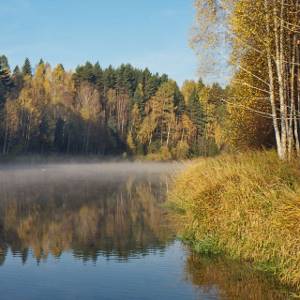
Theoretically, in the fall, burbot can be caught on the river anywhere, be it a deep reach or a coastal shallow, a quiet backwater or a rapid, because this fish moves very actively during this period. However, it is worth considering that predators always follow their potential prey, therefore it is best to throw the gear to where the bottom small fish are holding.
On some Ural rivers, where my companions had a chance to fish for burbot, the following was noticed: the most convenient (from a fisherman’s point of view) places for catching it were sandy or pebble beaches, which went gently under the water, but to a good depth. Here the fisherman could light a fire and sit and watch for a bite, and it was more convenient for him to fish. But places where the shore was washed away by the current and went steeply down turned out to be good for sneaking around. The best catches were here.
However, from time to time burbot exhibits some unpredictability. Today, let’s say, he is caught 10 meters from the water’s edge, but tomorrow he may not even come to the shore and walk “along the fairway.” This must be taken into account, so it would be very justified to use several gears thrown at different distances from the shore.
And in other places it also happens that burbot moves only along certain areas of the bottom. It turns out to be a kind of “fish trail”, which is the first task for the fisherman to find. To search for it, two or more gears are also used, which periodically check different places along the riverbed. As soon as a “patch” is discovered where regular bites take place, you can fish this area purposefully.
Finally, it’s worth writing a few lines about one tactical technique that burbot fishermen have been practicing since time immemorial - from the time when fish were caught in rivers with harpoons.
Since ancient times and everywhere it has been believed that burbot is attracted at night by the light of a fire lit on the shore. But ichthyologists do not entirely agree with this; in their opinion, everything is somewhat different. Burbot is rather completely indifferent to the fire. However, small fish willingly approach the shore, attracted by light and thermal radiation, where they accumulate. Burbot somehow senses this and follows. Be that as it may, the advice to build a fire at the fishing site works and has been tested for centuries.
A few lines about bycatch
When catching burbot in the fall, you often come across other fish that live in a pond or river, especially at the very beginning of the season, when the burbot bite coincides with the autumn feeding of other representatives of the ichthyofauna.
- Chub . The most frequent guest for snookers, especially if the fishing is carried out with a gudgeon, worm or frog. Just like burbot, it goes out at night to fish in shallow waters.
- Pike . It may also covet live bait. Rarely bites in the darkness of night, but can easily be caught in the late evening or early morning.
- Ide . Sometimes he is tempted by a small frog.
- Asp . Just like ide, it can bite on a frog, or (extremely rarely) on a worm. Usually, like pike, it is caught at dawn, but sometimes it happens in the middle of the night.
- Carp . It can also peck at night on a large crawler or a bunch of dung worms.
- Catfish _ There is information about catching catfish on large rivers using burbot gear. But this is rather an exception to the rule, because by the time burbot begins to be caught in full swing, the heat-loving catfish is already busy preparing for wintering.
